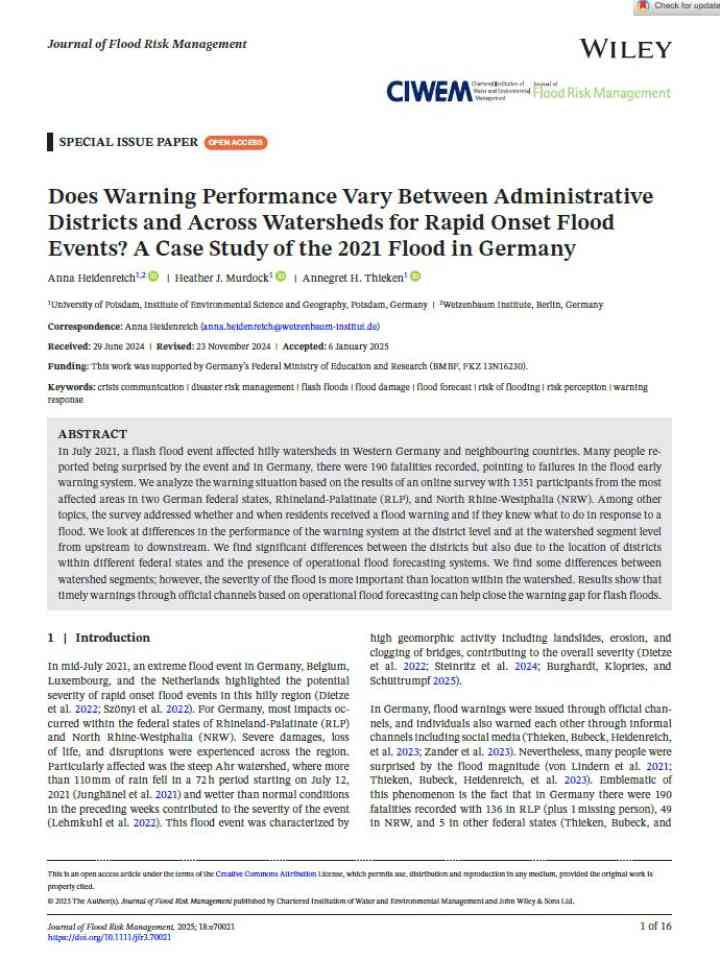Does warning performance vary between administrative districts and across watersheds for rapid onset flood events? A case study of the 2021 flood in Germany
This research analyzes the warning situation based on the results of an online survey with 1351 participants from the most affected areas in two German federal states, Rhineland-Palatinate (RLP), and North Rhine-Westphalia (NRW). Among other topics, the survey addressed whether and when residents received a flood warning and if they knew what to do in response to a flood. In July 2021, a flash flood event affected hilly watersheds in Western Germany and neighbouring countries. Many people reported being surprised by the event and in Germany, there were 190 fatalities recorded, pointing to failures in the flood early warning system.
The authors look at differences in the performance of the warning system at the district level and at the watershed segment level from upstream to downstream. They find significant differences between the districts but also due to the location of districts within different federal states and the presence of operational flood forecasting systems. The researchers find some differences between watershed segments; however, the severity of the flood is more important than location within the watershed. Results show that timely warnings through official channels based on operational flood forecasting can help close the warning gap for flash floods.
Explore further
